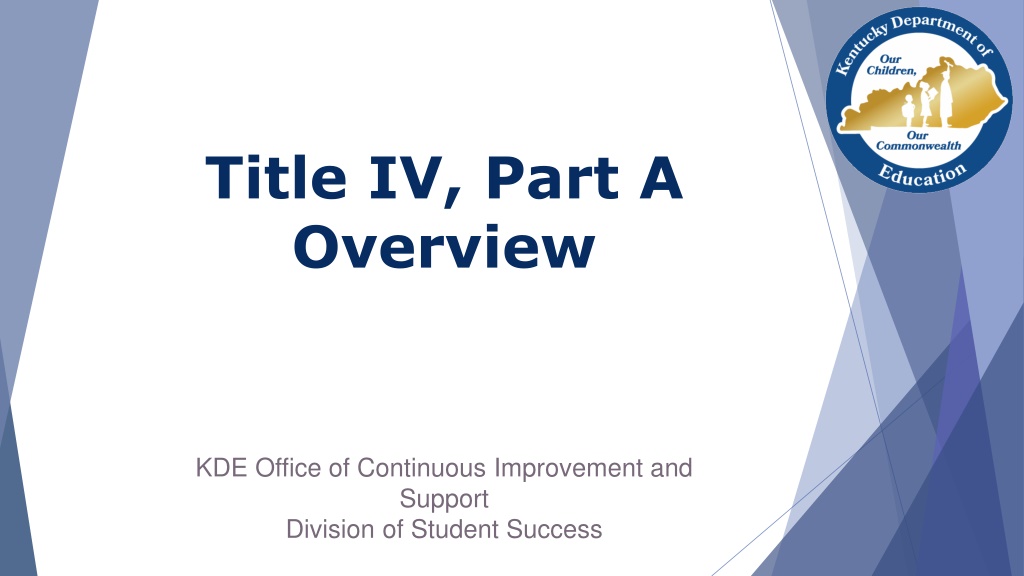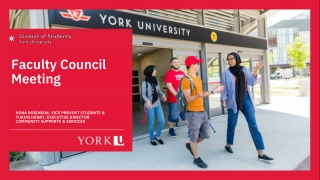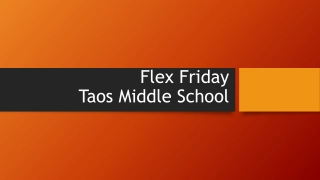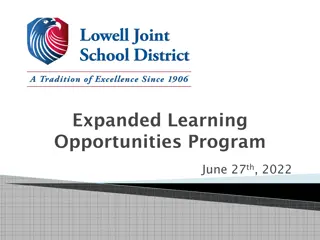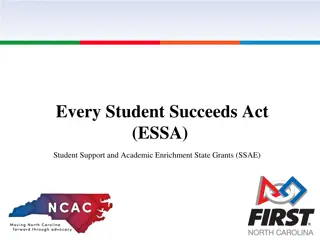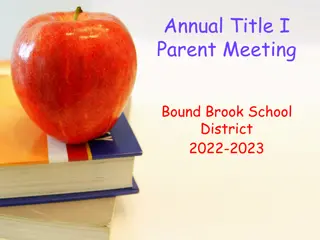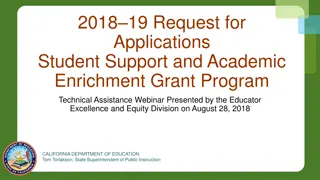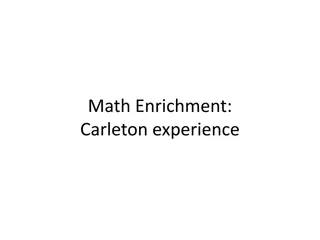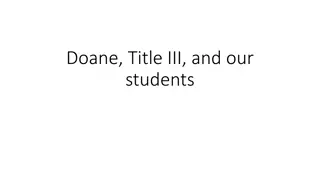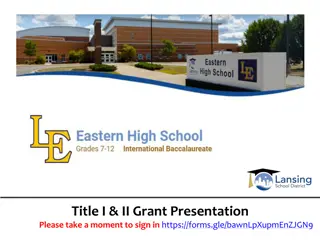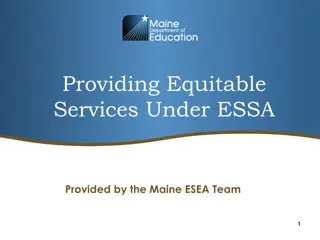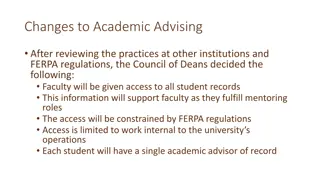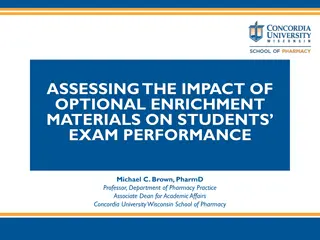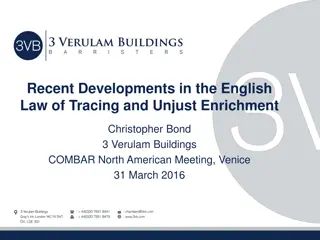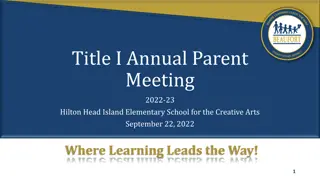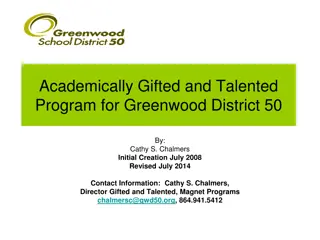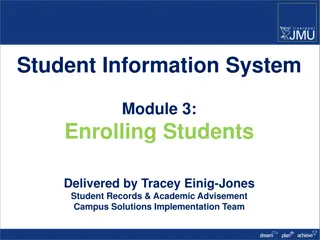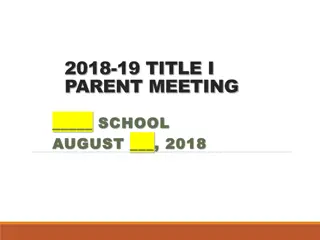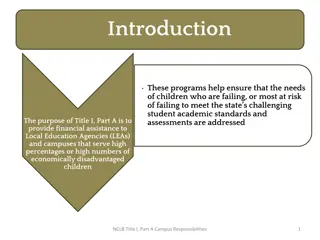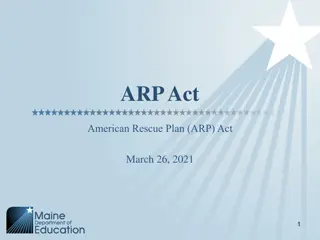Understanding Title IV, Part A: Student Support and Academic Enrichment Program
Title IV, Part A, under ESSA, has transformed from Safe and Drug-Free Schools to the Student Support and Academic Enrichment program. It focuses on providing a well-rounded education, enhancing school conditions, and promoting technology use for improved student achievement. Leveraging additional funding sources is encouraged, and districts can collaborate in consortia to maximize resources.
Download Presentation

Please find below an Image/Link to download the presentation.
The content on the website is provided AS IS for your information and personal use only. It may not be sold, licensed, or shared on other websites without obtaining consent from the author. Download presentation by click this link. If you encounter any issues during the download, it is possible that the publisher has removed the file from their server.
E N D
Presentation Transcript
Title IV, Part A Overview KDE Office of Continuous Improvement and Support Division of Student Success
Introduction Title IV, Part A is newly reauthorized in ESSA. Under No Child Left Behind (NCLB), it was known as Safe and Drug-Free Schools. This money was historically focused on school safety and substance abuse prevention in schools. Under ESSA, it is now the Student Support and Academic Enrichment program (SSAE). SSAE officially eliminates the Safe and Drug-Free Schools program. It consolidates more than 20 competitive grant programs previously authorized as part of NCLB into one large fund called a block grant. 2
Three Content Areas The purpose of SSAE grants is to improve students academic achievement by increasing the capacity of states, districts, schools, and communities to: provide all students with access to a well-rounded education; improve school conditions for student learning (safe and healthy students); and improve the use of technology in order to improve academic achievement and digital literacy of all students. 3
Leveraging Other Funding Resources SSAE funds may not be sufficient to independently fund many activities in the three content areas. Although these funds may not be used to replace state and local funds, leveraging other federal, state, and local resources in combination with SSAE grant funds is encouraged. For example, the SSAE grant can be used in conjunction with other titles within ESEA to support specific interventions, activities, or services. 4
Local Application Information Districts must complete the Intent to Participate in GMAPs by the deadline prior to completing the application (see Intent to Participate webinar) The application is part of the Consolidated application in GMAPs. The Fiscal Year 2018 Title IV, Part A application is coming out late, so districts will have until September 2019 to implement programs and spend FY18 money. The FY19 Title IV, Part A application will come out with the rest of the Consolidated applications later this year. 5
Consortia Districts may form a consortium with other surrounding districts and combine the funds each agency receives to jointly carry out the activities described. Districts are not required to form consortia. Funding for consortia is the sum of allocations between all of its member school districts. Allocations for consortium members are determined by the Title I funding formula. Please see the Title IV, Part A Consortium webinar for more information. 6
LEA Distribution of Funds A district or a consortium of districts must prioritize the distribution of funds to schools based on one or more of several factors, including schools that: 1) are among those with the greatest needs (as determined by the LEA); 2) have the highest numbers of students from low-income families; 3) identified as priority or focused schools 7
Equitable Services Agreement ESSA sections 1117 and 8501 requires that timely and meaningful consultation between the LEA and each Nonpublic School occur prior to any decision that affects the opportunities of eligible Non-public School students, teachers, and other educational personnel for equitable services, and shall continue throughout the implementation and assessment of these activities. ESSA also requires the terms of the consultation agreement to be in writing and submitted to the state ombudsman. 8
Equitable Services For the 2017-18 academic year, districts are required to fill out the Equitable services section in the GMAPs application. For the 2018-19 academic year, districts will need to complete the Equitable Services Consultation Packet that will be sent out to districts at the end of February 2018. 9
Overview of Local Application Requirements During the development of applications at the local level, a district/consortium must consult with stakeholders in the surrounding area. Stakeholders include: parents/guardians, teachers, students, principals or other school leaders, local government representatives, community based organizations (co-ops would fall in this category). Districts or consortia that receive $30,000 or more must conduct a Comprehensive Needs Assessment 10
Allocations More Than $30,000 Needs assessment required At least 20% of funds for activities to support well-rounded educational opportunities; At least 20% of funds for activities to support safe and healthy students; A portion of the funds must be spent on technology No more than 15% of the funds for activities to support the effective use of technology can be used on purchasing technology infrastructure. This includes: devices, equipment, software applications, platforms, digital instructional resources and/or other one-time IT purchases No more than 2% allowed for administrative costs 11
Comprehensive Needs Assessment ESEA section 4106(d) requires that an LEA receiving an SSAE program allocation of at least $30,000 must conduct a comprehensive needs assessment prior to receiving its allocation, and subsequent needs assessments at least once every three years, to examine its needs for improvement of: Access to, and opportunities for, a well-rounded education for all students; School conditions for student learning to create a healthy and safe school environment; and Access to personalized learning experiences supported by technology and professional development for the effective use of data and technology. 12
Comprehensive Needs Assessment Components that could be identified in the assessment include specific subjects, activities, or programs that are necessary to ensure students have access to a well-rounded education and a safe and healthy learning environment. Districts should ensure that their unique needs are fully identified and incorporated as appropriate. 13
Allocations Less Than $30,000 Needs assessment not required Specific allocations for safe and healthy students or well-rounded education not required Must spend money in at least one of the three program areas No more than 15% of funds to support effective use of technology may be used to purchase technology infrastructure No more than 2% allowed for administrative costs 14
Supplement, Not Supplant SSAE program funds may be used only to supplement, and not supplant, non-Federal funds that would otherwise be available for activities authorized under the SSAE program (ESEA section 4110). This means that, in general, LEAs may not use SSAE program funds for the cost of activities in the in the three program areas well-rounded education, safe and healthy students, and technology if the cost of those activities would have otherwise been paid with State or local funds in the absence of the SSAE program funds. 15
Examples of Well-Rounded Education Activities Science, technology, engineering, and mathematics (STEM) Music and arts Foreign language instruction High school redesign with dual or concurrent enrollment and early college high schools Civics instruction College and career counseling Social emotional learning Environmental education Accelerated learning programs 16
Safe and Healthy Student Activities Coordinated with other schools and community-based services and programs; Foster safe, healthy, supportive, and drug-free environments that support student academic achievement; Promote involvement of parents/guardians May be conducted in partnership with an institution of higher education, business, nonprofit organization, or community- based organization. 17
Examples of Safe and Healthy Student Activities Suicide prevention Child sexual abuse awareness and prevention Schoolwide Positive Behavioral Interventions Trauma-informed classroom management Bullying prevention Bullying prevention Relationship Relationship- -building skills Dropout prevention Dropout prevention Re Re- -entry programs and entry programs and t transition services for ransition services for justice involved youth justice involved youth Drug and violence Drug and violence prevention prevention School School- -based health and based health and mental health services mental health services building skills 18
Examples of Effective Use of Technology Personalized learning Blended learning strategies Technology to increase engagement of English Learner (EL) students Discover, adapt and share high-quality resources Specialized or rigorous academic courses using technology, including assistive technology Support professional learning for STEM Remember that no more than 15% of funds in this content area may be spent on devices, equipment, software applications, platforms, digital instructional resources and/or other one-time IT purchases. 19
Federal Resources National Center on Safe Supportive Learning Environments Non-Regulatory Guidance for SSAE grants 20
Resources at KDE Budget questions: Thelma Hawkins (502) 564-1979 ext. 4361 thelma.hawkins@education.ky.gov General grant questions: Lalah Brewer (502) 564-4772 ext. 4028 lalah.brewer@education.ky.gov 21
